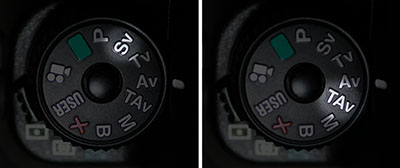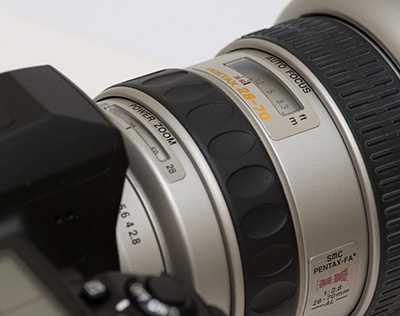Pentax K-5 Review
Exciting K-5 Features
These features are shared with the K-7.
Mirror-up Shooting:
For critical macro work it is key to avoid camera vibrations that would lead to blur in the image. Pentax has thought of the need for the advanced or professional photographer to be able to raise the mirror well ahead of the exposure and provides several ways of achieving mirror-up shooting:- Using remote control F: In the three second delay setting the mirror flips up when the button on the remote is pressed, and the shutter fires three seconds later.
- Using the self timer: In the two second delay setting the mirror flips up when the button on the camera (or on a wired remote) is pressed, and the shutter fires two seconds later.
- Mirror-up drive mode: The first press of the shutter button raises the mirror, the second press fires the shutter. This method also works with the wired remote, and is recommended over pressing the shutter button on the camera since that may introduce vibrations.
- Live view with contrast detect auto focus or manual focus

Backwards compatibility:
Compatible with every Pentax k-mout lens made since the 70's, as well as with screwmount lenses (adapter needed). See our Lens Database for a listing of compatible lenses.TAv and Sv Auto Exposure Modes:
These two exposure modes were new to the K10D and are still unique to Pentax.In TAv exposure mode the photographer sets shutter speed and aperture, and the camera sets a matching ISO so that correct exposure is obtained.

Sv is a program mode where the photographer sets the ISO with the rear control wheel and the camera sets shutter speed and aperture as per the program line.
B Exposure Mode:
The B mode can be customized so that the first press of the shutter button opens the shutter which stays open until the next press. This also works using the infrared Remote F or a wired remote.AF Assist Lamp:
Used extensively by the K-5 is AF.S mode, this green lamp allows it to focus at short ranges (up to about 20 feet) even when it's pitch black outside. The lamp is not used in AF.C (continuous).Program Lines:
Six program lines are available: Auto, Normal, High Shutter Speed, Narrow Depth of Field, Expanded Depth of Field, MTF (selects the aperture based on the lens in use so as to maximize resolution).Continuous Shooting with Remote F:
In this drive mode continuous shooting starts with a press of the button on the remote and continues until the button is again pressed.Superb Control Layout Reduces the Need for Menu Diving:
The K-5 has two control wheels allowing for shutter speed and aperture to be controlled with each wheel (you can also customize the way that the control wheels behave depending on what mode you're in - see pages 5 and 6 of the custom function meny). Many functions are set through a button press and turning a control wheel, or via the Info screen. This all reduces the need for menu diving during shooting.The info screen remembers what setting was modified last, and the menu system can be set to also remember the last menu item accessed.
All in all the camera is very fast to operate in the field.
Lens Correction:
The camera can correct lens distortion and lateral aberration. This works for all DA, DA L, D FA lenses and select FA lenses. The image processing time gets prolonged when shooting jpg files, and the frame rate is reduced in high speed continuous mode. When shooting RAW there is no additional image processing - the correction settings are stored in the RAW file and processing is deferred to post processing. The bundled Digital Camera Utility will read the corrections from the RAW file and apply them automatically.Power Zoom:
The camera supports the basic power zoom function and lens retraction with FA lenses with this feature.


